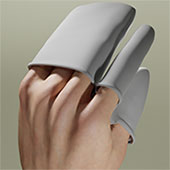Collaborative Design Project Methods:
• Co-operative and Collaborative Design Process
• Interdisciplinary Design Efforts
• Experience the Problem
• Group Inquiry and Ideation
• Participatory Design Process
• Don’t give up
• Sharable 'Cork/Note Book'
• Space in the class as Project Room
• Document the Process
• Make use of your Design Skills
• Learning a skill that you do not have
Details:
• Co-operative and Collaborative Design Process:
We shall work together co-operatively/collaboratively as small groups (around 2/3) to search, discuss, ideate, work, brain-storm and body-storm so as to cross relate experiences and expertise. (each member takes on different responsibilities) (open minded collaboration)
The project will encourage collaboration with students from other specializations, disciplines or institutes or with professionals from the industry.
• Interdisciplinary Design Efforts:
It is always valuable to have an inter disciplinary team members who have different skills. For example a combination of Engineer, architect and Graphic Designer can bring in different skills and knowledge into the group. (make use of each others skills) – so form teams with different skill sets and not necessarily based on friendship
• Experience the Problem:
Many a times, it is easy to understand the problem if you role play the user and experience the problem by going to the environment and trying out the product or service by yourselves.
• Group Inquiry and Ideation:
Ask questions. Brainstorm. One needs to build on another's idea. No criticising even if the idea is ridiculous. As Edward de Bono say’s ‘think lateral and not just vertical’.
• Participatory Design Process:
Involve users (even indirect users) in various stages of the design process. Observe them in action, converse with them, show them your ideas, get feedback, etc
• Don’t give up:
conviction, courage, taking risks, try out even crazy or bad ideas, being positive, getting involved.
• Sharable 'Cork/Note Book':
Start an open sharable note book to document your ideas.
Take notes, look for key words, draw doodles, sketches, make diagrams, network connections, make mappings, Visualises, annotate, create wish list, etc.
• Space in the class as Project Room:
The class becomes the space to display all that is connected with the workshop – references, articles, pictures, photos, mind maps, diagrams, keywords, etc.
• Document the Process:
Document interactions, usability, activities, feedback, etc...
Use digital photography to observe users, document users in action, and build narrative stories about their experiences.
• Make Use of your Design skills:
Make use of your visualization and story building skills for representations in all the design stages – visually mapping of information, visualizing concepts through sketches, scenario building, final presentations, video prototyping, etc.
. Make appropriate use of type, layout, composition and semantics
• Learning a skill that you do not have:
It is always a good objective to have to acquire a skill that you may not already have – this could be sketching skills, typographic skills, oral presentation skills, etc.

